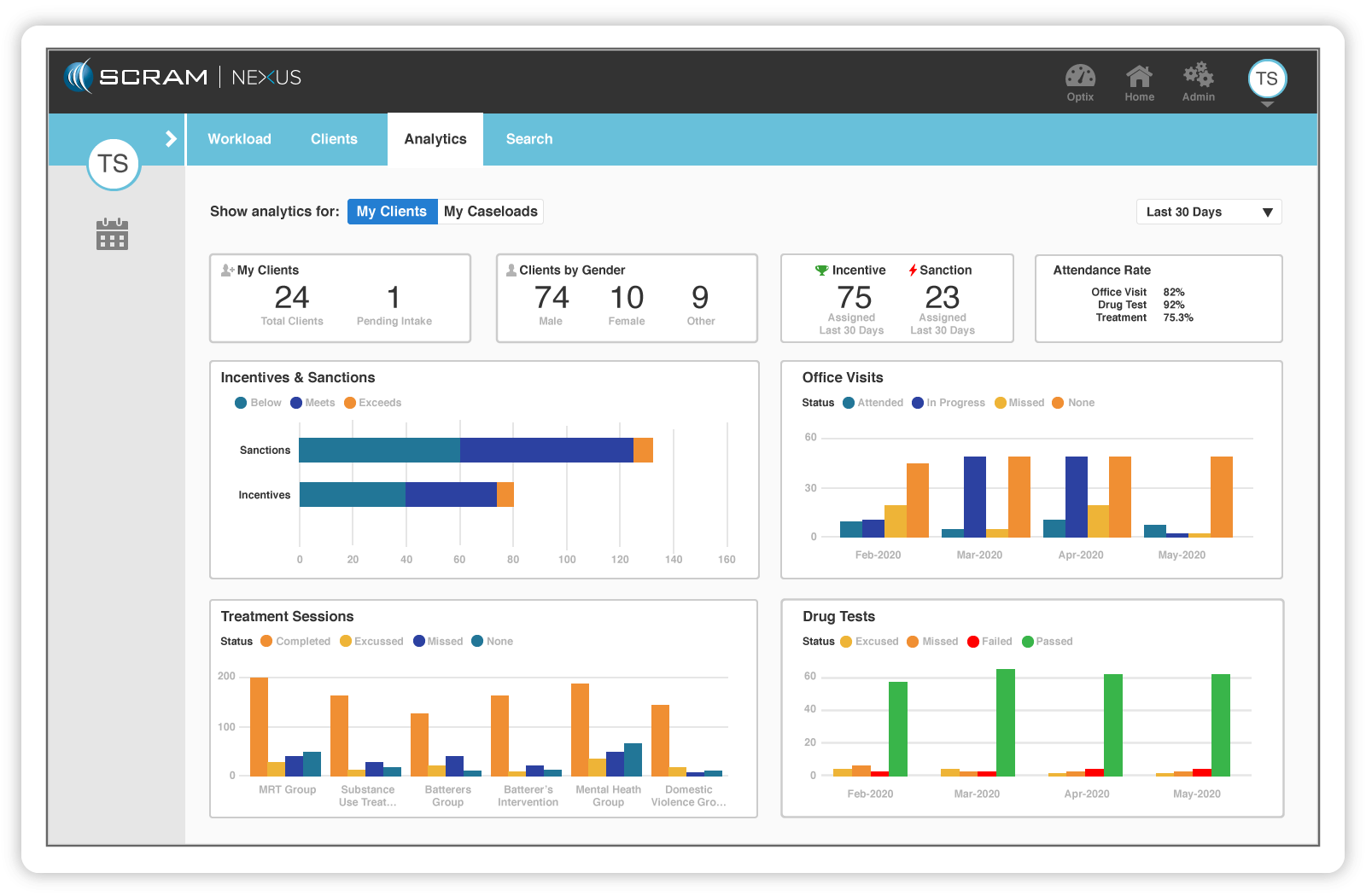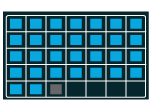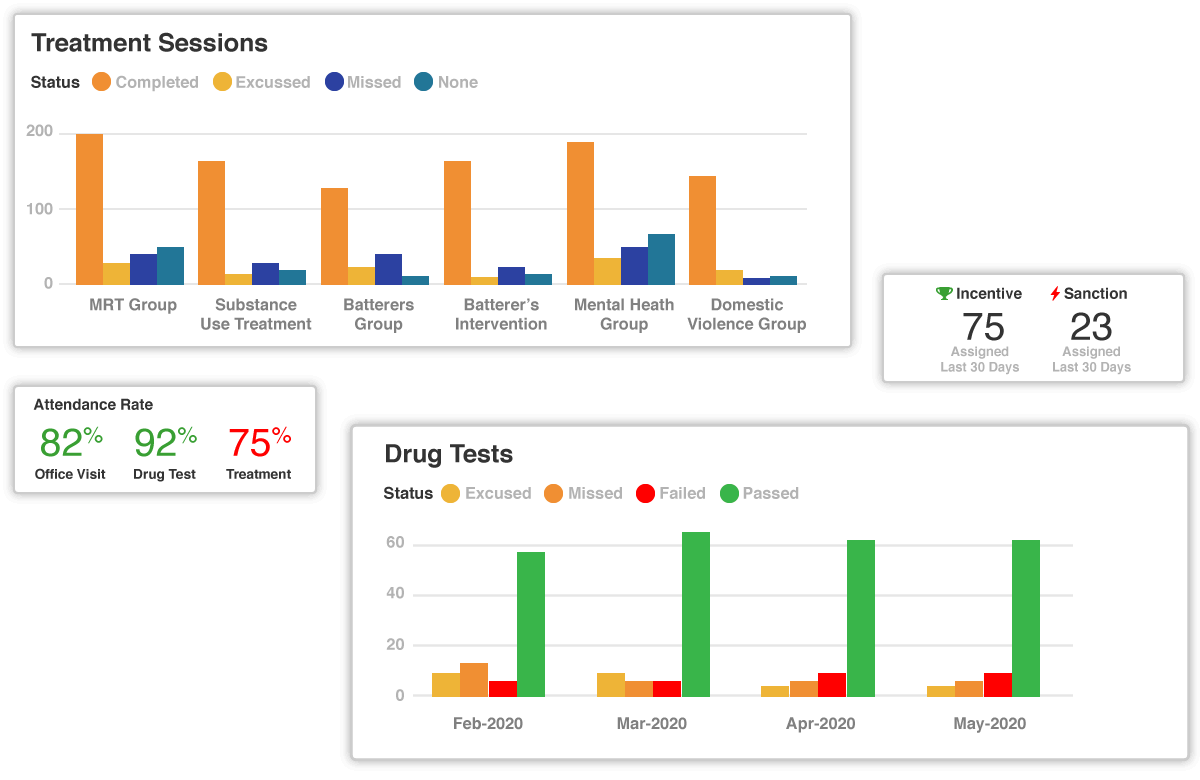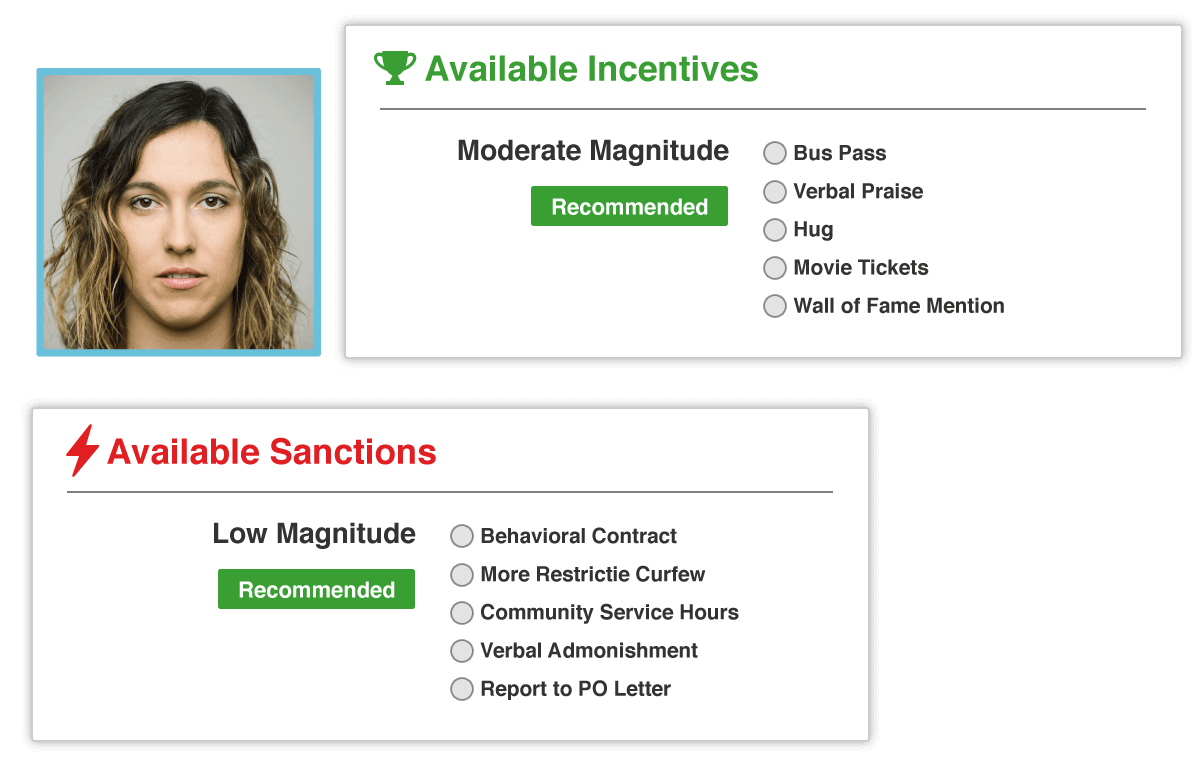SCRAM Nexus® Case
The first-ever client-focused decision support software for community corrections that empowers officers to consistently implement and measure agency policy and evidence-based practices for better client outcomes.

The Future of Community Corrections
Community corrections officers work every day to reduce recidivism, ensure public safety, and improve client outcomes. Lack of integrated technology combined with the complexities of implementing and measuring agency policy and evidence-based practices consistently makes it challenging for officers to focus on what matters most: their clients.
This is why we invented SCRAM Nexus Case, the first-ever decision support case management system that guides officers through daily workflows to consistently apply evidence-based practices and departmental policies. With dynamic supervision planning and tracking, clients are automatically referred to treatment and monitoring services, allowing officers to efficiently manage diverse caseloads and better allocate time and resources. Nexus Case constantly synthesizes client data into meaningful insights and recommends incentives and sanctions appropriate for a client’s risk and need, proven to produce the best outcomes.
See how Nexus Case sythensizes data and provides recommendations to produce the best client outcomes.
Shift the Balance of Daily Workload
Empower officers to be more efficient while spending more time with clients.

30 Days
It can take up to two months to fully onboard a client into community corrections as officers manually build supervision plans from various models, policies, and providers. With so much client data to consider, it can seem nearly impossible to create the ideal plan.

3 Hours
In a fraction of the time, SCRAM Nexus Case automates onboarding by compiling client data to create supervision plans based on risk, need, and policy. Because Nexus Case automatically refers clients to treatment and other services, officers save even more time.

Manually gathering data can be cumbersome.
It can be time-consuming and chaotic for officers to manually gather client treatment and progress data from disparate sources via phone calls, email, fax, and more. With growing caseloads and diverse clients, it can be difficult for officers to find time to spend with their clients.

Nexus Case integrates with external sources, creating an automatic and constant feedback loop.
Through integration with treatment providers and other external data sources, Nexus Case compiles client data and synthesizes it into meaningful insights. For the first time, officers can use this data to have constructive interactions, meaningful conversations, and stronger relationships with clients, all while saving time.
Bias could negatively affect client behavior, relapse, and recidivism.
Oftentimes officers assign interventions that are too severe or too lenient, leaving room for error and bias that could lead to public safety concerns. And, corrections departments have no way to track if the interventions have even achieved the desired outcomes.

Nexus Case makes recommendations to achieve the best client outcomes.
Using departmental policies and best-practice standards, Nexus Case recommends the proper magnitude of response matched with the intervention known to produce the best outcomes based on risk and needs. Daily decision making becomes streamlined and documentable like never before.

Client communication is manual and not integrated.
Responsibilities are often unbalanced, with officers spending up to 60% of the time on administrative tasks and only 40% on client engagement. These processes are often manual with no record of communications between officers and clients, causing inefficiencies.
Communicate and engage with clients like never before.
SCRAM TouchPoint® makes client engagement easy and efficient. With secure text-like messaging and mobile check-ins, communication between officers and clients is seamless. Automatic court and other appointment reminders help clients remain accountable and complete the terms of their supervision.

Departments struggle to evaluate program and client performance.
Corrections departments generally have no way to track or measure program effectiveness. Without any insight into program or client data, supervisors struggle to evaluate and identify what needs to change in their program models and can’t make adjustments accordingly.

Powerful analytics from Nexus Case provide unprecedented knowledge into program effectiveness.
With rich reporting and interactive analytics, Nexus Case provides insight into the performance of supervision models, officer adoption of policy, treatment provider performance, client compliance, and more. Departments can ultimately make data-driven changes to supervision models that fine-tune program policies across entire caseloads, fully realizing the adoption and investment in evidence-based practices.
Nexus Case synthesizes the science behind EBP, our department policies, and officer discretion, providing my agency a new tool for improving outcomes and promoting fidelity in our practice.
Brian Richart, Chief Probation Officer, El Dorado County, CA
Effortlessly Implement & Measure Evidence-Based Practices
As community corrections departments and treatment courts try to find ways to do more with less, the lack of time and resources makes proper EBP implementation challenging, and oftentimes unsuccessful. But, with the help of technology, the balance can be shifted.
SCRAM Nexus Case effortlessly integrates evidence-based practices into existing programs and empowers officers to consistently apply best practices to their day-to-day decision making. This powerful decision support software automates client data, synthesizes it into meaningful insights, and recommends the proper responses to create the best client outcomes. Nexus Case also provides an in-depth look into program effectiveness with advanced analytics and rich reporting, providing never-before-seen knowledge into agency data. With Nexus Case, all levels within a court or agency can measure and evaluate program and client performance and easily make adjustments when needed.
With the guidance and support of technology, corrections departments can better utilize their valuable resources and give officers more time to spend with their clients.
